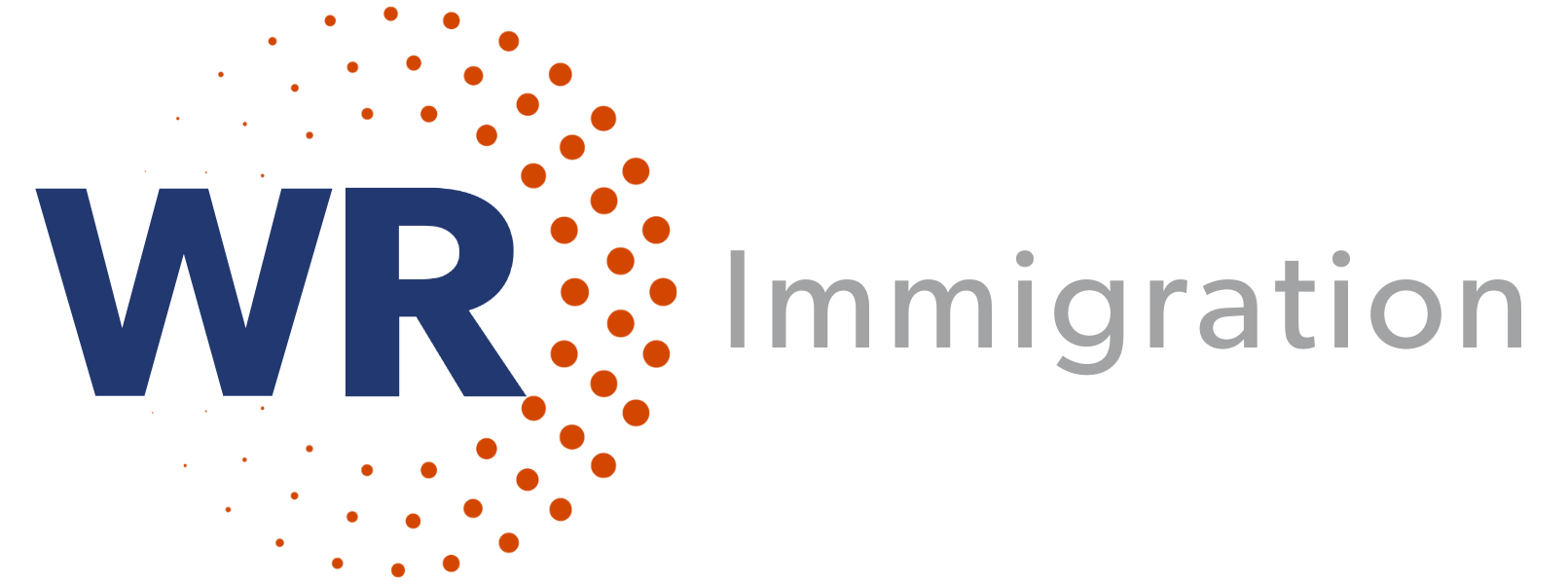In this edition, find the latest news on worker options following termination of employment, the H-2B Nonimmigrant Visa availability increase, the 2023 H-2A hourly adverse effect wage rates, and more.
USCIS Provides List of Options for Nonimmigrant Workers Following Termination of Employment
On December 19, 2022, U.S. Citizenship and Immigration Services (USCIS) provided a compilation of options that may be available to nonimmigrant workers seeking to remain in the United States in a period of authorized stay following termination of employment.
The compilation includes details on:
- A discretionary 60-day grace period that allows workers in E-1, E-2, E-3, H-1B, H-1B1, L-1, O-1, or TN classifications (and their dependents) to be considered as having maintained status following the cessation of employment for up to 60 consecutive calendar days or until the end of the authorized validity period, whichever is shorter.
- Portability to a new employer, allowing workers currently in H-1B status to begin working for a new employer as soon as the employer properly files a new H-1B petition with USCIS, without waiting for the petition to be approved. Also, a worker with an adjustment of status application (Form I-485) that has been pending for at least 180 days with an underlying valid immigrant visa petition (Form I-140) has the ability to transfer the underlying immigrant visa petition to a new offer of employment in the same or similar occupational classification with the same or a new employer (commonly known as “porting”).
Other options include change of status, change of status and employer, adjustment of status, period of authorized stay with a “compelling circumstances” employment authorization document, expedited adjudication criteria, and departure from the United States and seeking readmission in the same or another classification.
Details:
- USCIS alert, Dec. 19, 2022. https://www.uscis.gov/newsroom/alerts/options-for-nonimmigrant-workers-following-termination-of-employment
USCIS Increases H-2B Nonimmigrant Visa Availability
In a temporary final rule published on December 15, 2022, the Secretary of Homeland Security, in consultation with the Secretary of Labor, has increased the total number of noncitizens who may receive an H-2B nonimmigrant visa by up to 64,716 for fiscal year (FY) 2023. To “assist U.S. businesses that need workers to begin work on different start dates,” the Departments of Homeland Security (DHS) and Labor (DOL) will distribute the supplemental visas in several allocations, including two separate allocations in the second half of FY 2023.
Of the total 64,716 visas made available, 20,000 visas are reserved for nationals of Guatemala, El Salvador, Honduras, or Haiti. All 64,716 visas are available only to “those businesses that are suffering irreparable harm or will suffer impending irreparable harm, as attested by the employer on a new attestation form.” In addition to making the additional 64,716 visas available under the FY 2023 time-limited authority, DHS is exercising its general H–2B regulatory authority to provide temporary portability flexibility again by allowing H–2B workers who are already in the United States to begin work immediately after an H–2B petition (supported by a valid temporary labor certification) is received by U.S. Citizenship and Immigration Services (USCIS) and before it is approved.
DHS will not accept any H-2B petitions under provisions related to the FY 2023 supplemental numerical allocations after September 15, 2023, and will not approve any such H-2B petitions after September 30, 2023. Provisions related to portability are only available to petitioners and H-2B nonimmigrant workers starting work by January 24, 2024.
USCIS previously announced that petitioners requesting additional H-2B workers under the rule must file their petitions at the California Service Center. This change does not affect the filing locations for petitions filed under the permanent H-2B regulations, whether they are cap-subject or cap-exempt. USCIS also announced that it is temporarily suspending premium processing for H-2B supplemental cap petitions until January 3, 2023. Premium processing remains available for all other H-2B petitions.
DHS and DOL are accepting written public comments on the temporary final rule and related new information collection (Form ETA-9142B-CAA-7) by February 13, 2023. Instructions on submitting comments are included in the temporary final rule.
Details:
- Temporary final rule, DOL/DHS, 87 Fed. Reg. 76816 (Dec. 15, 2022). https://bit.ly/3WtMRQz
- “DHS and DOL Announce Availability of Additional H-2B Visas for Fiscal Year 2023,” USCIS News Release, Dec. 12, 2022. https://www.uscis.gov/newsroom/news-releases/dhs-and-dol-announce-availability-of-additional-h-2b-visas-for-fiscal-year-2023
- “USCIS Announces Important Filing Information for Upcoming FY 2023 H-2B Supplemental Cap Petitions,” USCIS Alert, Dec. 8, 2022. https://bit.ly/3URJt0u
- “DHS to Supplement H-2B Cap With Nearly 65,000 Additional Visas for Fiscal Year 2023,” USCIS Alert, Oct. 12, 2022. https://bit.ly/3FQFu09
OFLC Publishes New 2023 H-2A Hourly Adverse Effect Wage Rates for Non-Range Occupations and for Herding or Production of Livestock on the Range
In two notices, the Department of Labor’s Employment and Training Administration (ETA) announced the new Adverse Effect Wage Rates (AEWRs) under the H-2A program for (1) agricultural labor or services other than the herding or production of livestock on the range, and (2) occupations involving herding or production of livestock on the range.
Details:
- Notice announcing 2023 hourly AEWRs for non-range occupations, 87 Fed. Reg. 77142 (Dec. 16, 2022). https://www.govinfo.gov/content/pkg/FR-2022-12-16/pdf/2022-27332.pdf
- Notice announcing 2023 AEWRs for herding or production of livestock on the range, 87 Fed. Reg. 77141 (Dec. 16, 2022). https://www.govinfo.gov/content/pkg/FR-2022-12-16/pdf/2022-27333.pdf
- AEWRs by state (page), ETA. https://www.dol.gov/agencies/eta/foreign-labor/wages/adverse-effect-wage-rates
- AEWRs by state (map), ETA. https://www.dol.gov/sites/dolgov/files/ETA/oflc/pdfs/AEWR-Map-2023.pdf
Chief Justice Roberts Issues Temporary Stay of ‘Title 42’; Thousands Wait in Mexico
Chief Justice Roberts of the U.S. Supreme Court ordered a temporary stay of Title 42 on December 19, 2022, to allow the Supreme Court time to consider the issue. Justice Roberts’ order came after the Department of Homeland Security (DHS) issued an update on December 13, 2022, on southwest border security and preparedness in anticipation of a court-ordered lifting of Title 42 by December 21, 2022, which was upheld by the D.C. Circuit Court of Appeals in a ruling on December 16, 2022.
Title 42 prevents many migrants from seeking asylum in the United States because of COVID-19 concerns and requires them to wait in Mexico. According to reports, thousands of migrants, many from Haiti, who wish to enter the United States are in camps in Mexico. Two Title 42 amendments failed that had slowed down passage of the $1.7 trillion funding bill that Congress passed and President Biden signed on December 23, 2022. Reportedly, the Biden administration also may be considering humanitarian parole for some Haitians, Nicaraguans, and Cubans, as was provided for Venezuelans recently.
Details:
- “Chief Justice Roberts Briefly Halts Decision Banning Border Expulsions,” New York Times, Dec. 19, 2022. https://www.nytimes.com/2022/12/19/us/politics/title-42-scotus-immigration-asylum.html (subscription required)
- Arizona v. Mayorkas, order issued Dec. 19, 2022. https://www.supremecourt.gov/orders/courtorders/121922zr_g314.pdf
- Application for a stay, submitted to Chief Justice Roberts Dec. 19, 2022. https://www.supremecourt.gov/DocketPDF/22/22A544/250328/20221219140309326_Title%2042%20-%20Emergency%20Application%20for%20Stay%20File%20Version.pdf
- Federal respondents’ opposition to application for a stay pending certiorari, Dec. 20, 2022. https://www.supremecourt.gov/DocketPDF/22/22A544/250530/20221220190658873_22A544%20Govt%20opp%20to%20Ariz%20stay%20final%20corrected.pdf
- Reply of applicant Arizona, et al. filed, Dec. 21, 2022. https://www.supremecourt.gov/DocketPDF/22/22A544/250553/20221221084240400_Title%2042%20-%20Emergency%20Stay%20Reply%20File%20Version%20Final%202.pdf
- “Senate Passes $1.7 Trillion Omnibus Spending Bill Without Title 42 Protections,” National Review, Dec. 22, 2022. https://www.nationalreview.com/news/senate-passes-1-7-trillion-omnibus-spending-bill-without-title-42-protections/
- “Thousands Wait in Tent Camps in Mexico for a Chance to Cross the Border,” NBC News, Dec. 22, 2022. https://www.nbcnews.com/news/latino/thousands-wait-tent-camps-mexico-chance-cross-border-rcna63026
- “U.S. Court Rejects Maintaining COVID-19 Asylum Restrictions,” Associated Press, Dec. 17, 2022. https://apnews.com/article/texas-donald-trump-immigration-missouri-amarillo-e6f9ce07b955bdc962118a798129f319
DHS Public Charge Ground of Inadmissibility Final Rule Effective December 23
On December 23, 2022, the Department of Homeland Security’s (DHS) Public Charge Ground of Inadmissibility final rule went into effect. The previously announced final rule “provides clarity and consistency for noncitizens on how DHS will administer the public charge ground of inadmissibility. This final rule restores the historical understanding of a ‘public charge’ that had been in place for decades before the previous administration began to consider supplemental public health benefits such as Medicaid and nutritional assistance as part of the public charge inadmissibility determination,” DHS said.
When making a public charge inadmissibility determination under the final rule, DHS said it will consider an applicant’s “age; health; family status; assets, resources, and financial status; education and skills”; a sufficient “Affidavit of Support Under Section 213A of the INA (when one is required)”; and prior or current receipt of “Supplemental Security Income (SSI); cash assistance for income maintenance under Temporary Assistance for Needy Families (TANF); State, Tribal, territorial, or local cash benefit programs for income maintenance (often called ‘General Assistance’); or long-term institutionalization at government expense.”
For public charge inadmissibility determinations, DHS will not consider receipt of noncash benefits (for example, the Supplemental Nutrition Assistance Program, public housing, school lunch programs) other than long-term institutionalization at government expense.
Applicants must file the updated 12/23/22 edition of I-485, Application to Register Permanent Residence or Adjust Status. Earlier versions will be rejected, U.S. Citizenship and Immigration Services (USCIS) said.
Details:
- USCIS alert, Dec. 19, 2022. https://www.uscis.gov/newsroom/alerts/dhss-public-charge-final-rule-goes-into-effect-on-dec-23
- Public Charge Ground of Inadmissibility, DHS Final Rule, 87 Fed. Reg. 55472 (Sept. 9, 2022). https://www.govinfo.gov/content/pkg/FR-2022-09-09/pdf/2022-18867.pdf
- USCIS Policy Manual update, Part G—Public Charge Ground of Inadmissibility. https://www.uscis.gov/policy-manual/volume-8-part-g
- Updated Form I-485, Application to Register Permanent Residence or Adjust Status (12/23/22 edition). https://www.uscis.gov/i-485
- Public Charge Resources, USCIS. https://www.uscis.gov/green-card/green-card-processes-and-procedures/public-charge/public-charge-resources
- Clarifying the 2022 Public Charge Final Rule (infographic). https://www.uscis.gov/sites/default/files/document/flyers/PublicChargeFinalRule2022_Infographic_V4_508.pdf


